
How do octopuses change color?
It is one of the oldest mysteries in science.
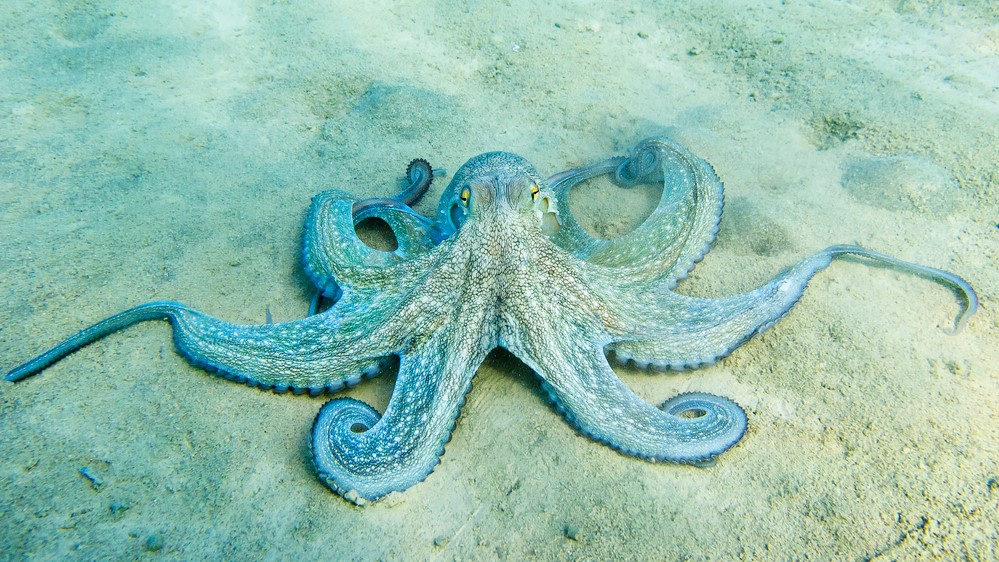
Octopuses might be nature's ultimate weirdos: They have squishy bodies that can squeeze through tiny cracks; eight sucker-covered arms that can be regrown; three hearts that pump blue blood (rich in copper) through their veins; and massive, donut-shaped brains that give them superior intelligence compared with other invertebrates. But octopuses' most awe-inspiring trait is arguably their ability to rapidly change color and blend into their surroundings, camouflaging themselves at will.
Camouflage is an important skill shared by almost all cephalopods — a group of marine invertebrates that also includes squid and cuttlefish — but octopuses have taken it to a whole other level. These animals have the highest resolution patterns of any cephalopod and display some of the quickest color transitions in the entire animal kingdom. (There are around 300 species of octopus in the order Octopoda. In this article, the term 'octopuses' is used to describe general trends throughout the group, but not every species is capable of changing color, and the camouflaging mechanics they use can vary.)
Octopuses' mastery of camouflage has mystified researchers since the beginning of science itself. Around 2,400 years ago, Aristotle, the ancient Greek philosopher who is often considered one of the founding fathers of modern science, jotted down detailed observations of octopus camouflage — the first known person to do so, Leila Deravi, a biochemist at Northeastern University in Massachusetts who studies octopus camouflage mechanics, told Live Science. But even though octopus camouflage "has been studied and observed for centuries, not a lot of developments have been made" until very recently, she said.
Related: What's the difference between arms and tentacles?
Here's why: Color changing in cephalopods is a complex process that involves many different microscopic components. This makes it "almost impossible" to answer exactly how it works, Deravi said. However, in the last few decades, cutting-edge technology has enabled researchers to "tease apart" the individual components of cephalopod camouflage and are now beginning to understand how they work, she said.
What makes an octopus change color?
Octopuses can shift hues because they have chromatophores — tiny, color-changing organs that are dotted throughout an octopus's skin.
At the heart of each chromatophore are tiny sacs filled with nanoparticles of a pigment called xanthommatin, Deravi said. The pigment sacs are surrounded by an elastic matrix that is, in turn, connected to muscle cells that surround the sac in a pointed star shape, she added. As these muscle cells contract, the pigment sac stretches, which enables more light to enter the cell and reflect off the xanthommatin particles. Because xanthommatin absorbs certain wavelengths, or colors, of visible light, the light it reflects back out of the chromatophore is a different color compared with the light that first entered the cell.
Sign up for the Live Science daily newsletter now
Get the world’s most fascinating discoveries delivered straight to your inbox.
There are three layers of chromatophores in an octopus's skin, and each layer has xanthommatin particles that reflect back a different color. The top layer produces a yellow color, the middle layer reflects back a red color and the bottom layer produces a brown color, Deravi said. Octopuses can combine these colors by changing the shape of the chromatophores in each layer, which enables the cephalopods to create a wide array of hues.
Each individual chromatophore, of which there can be tens of thousands or even millions depending on the size of the species, is controlled with direct neural signals from the octopus's brain that causes the muscles surrounding the sac to contract or relax, changing its shape. "It's just like how you would flex your biceps, your brain signals to flex and it flexes," Deravi said. "With the chromatophores, the [octopus's] brain is signaling to pull these muscles to open up these sacs," which then changes the color of the skin.
The Instagram post below shows squid chromatophores contracting and relaxing to the beat of the song "Insane in the Brain," by the band Cypress Hill. In this scenario, the vibrations from the music are misinterpreted as neural signals by the chromatophore muscles.
A post shared by Live Science (@live_science)
A photo posted by on
Chromatophores aren't the only structures involved in the color-changing party. Additional organs, known as iridophores and leucophores, in the skin of certain octopus species can help enhance or alter the colors they produce.
Iridophores are slightly larger than chromatophores and help create octopuses' more luminescent and metallic colors. Iridophores contain a protein called reflectin, which stacks up inside the iridophores to create a mirror-like effect, according to a 2018 study published in the journal IOP Science. Leucophores are similar in size to chromatophores but have specialized white pigments instead of xanthommatin, which scatter or refract light and help control the contrast and brightness of colors, Deravi said. Both iridophores and leucophores are expanded and contracted by neural signals from the brain, just like chromatophores are.
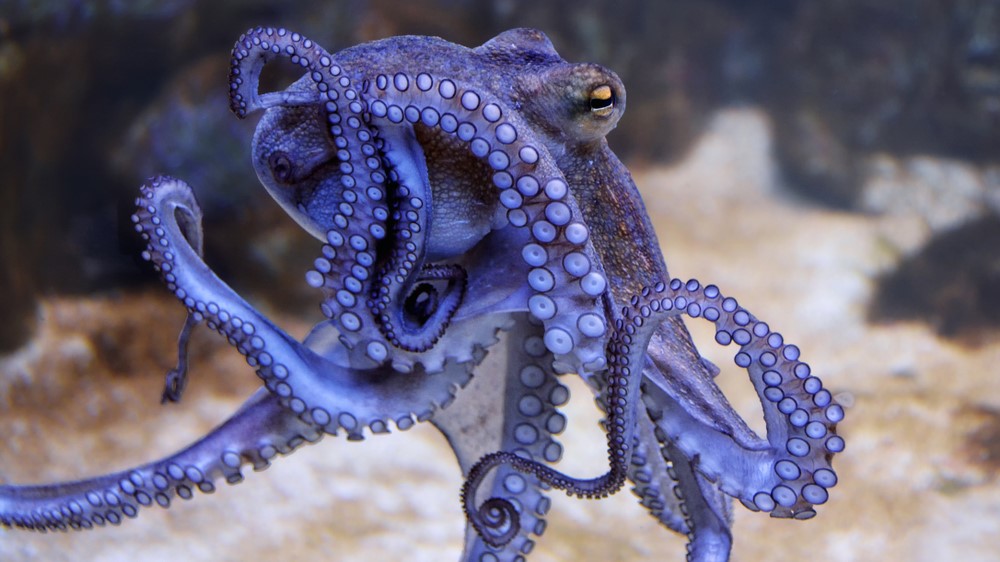
Related: What color were the dinosaurs?
Octopuses also possess machinery in their skin that helps them to change their texture, which adds another layer to their camouflage. They have tiny bumps called papillae that can be relaxed, making the skin smooth like seaweed, or contracted, making the skin lumpy and rough like a rock. The papillae are also controlled by neural signals from the brain, but this texture-changing process is even less understood than color-changing, Deravi said.
What makes octopuses so good at changing color?
Many animals rely on camouflage, but octopuses are in a league of their own, largely because of the speed and accuracy with which they can transition between vastly different colors. "It's a fraction of a second," Deravi said. "I think the fastest [transitions] are under 100 milliseconds (0.1 seconds), which is faster than a blink of an eye."
In contrast, it can take chameleons several seconds to more than a minute to completely change color.
Amazing color change by this octopus 😍 🎥 : William Drumm pic.twitter.com/y8jZQMXjRGJune 15, 2020
Octopuses can make such rapid color changes because "their brain is deeply interconnected with the surface of the skin," Deravi said. "They have these really fast signaling mechanisms to be able to say 'turn on here' and 'turn off there' all over their body."
The main reason for this interconnectedness between brain and skin is that, unlike most animal brains, octopus brains are not confined to a single region (i.e the head). In addition to their donut-shaped brains, octopuses have "brain pockets," or nodes, all over their bodies and throughout their arms, Deravi said. Researchers believe that this enables individual octopus arms to have a mind of their own, which could play a role in color-changing. "However, trying to understand how this works is a whole other area of research," she added.
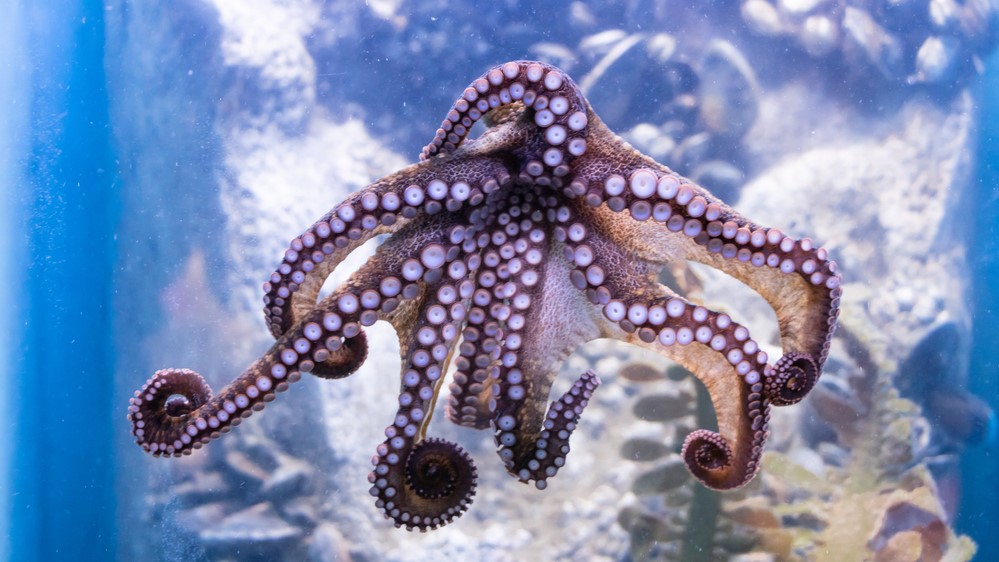
Octopuses also have more chromatophores than squids and cuttlefish per square inch of skin, Deravi said, which helps them to create super-high-resolution patterns compared with other cephalopods.
However, there is still one major unsolved mystery surrounding cephalopod camouflage: how they are so good at matching their skin color to their surroundings. Despite their ability to create a wide variety of different colors, a majority of octopuses and other cephalopods are actually color blind: Octopus eyes only have one type of photoreceptor, the cells convert light into neural signals, which means they can only detect differences in light intensity, according to a review paper published 2020 in the journal Frontiers in Physiology. (Human eyes have four types of photoreceptors.)
One potential explanation is that octopus eyes are able to see color without photoreceptors. A 2016 study published in the journal Biophysics and Computational Biology hypothesized that there are additional receptor types in octopus eyes that are unfamiliar to us that could enable cephalopods to see colors in a different way than humans and other animals do.
There are also theories that light receptors in the skin could help octopuses match the colors around them. Previous studies have shown that octopus arms can react to changes in light intensity when octopuses cannot see. However, there is no evidence yet that this helps them to see colors.
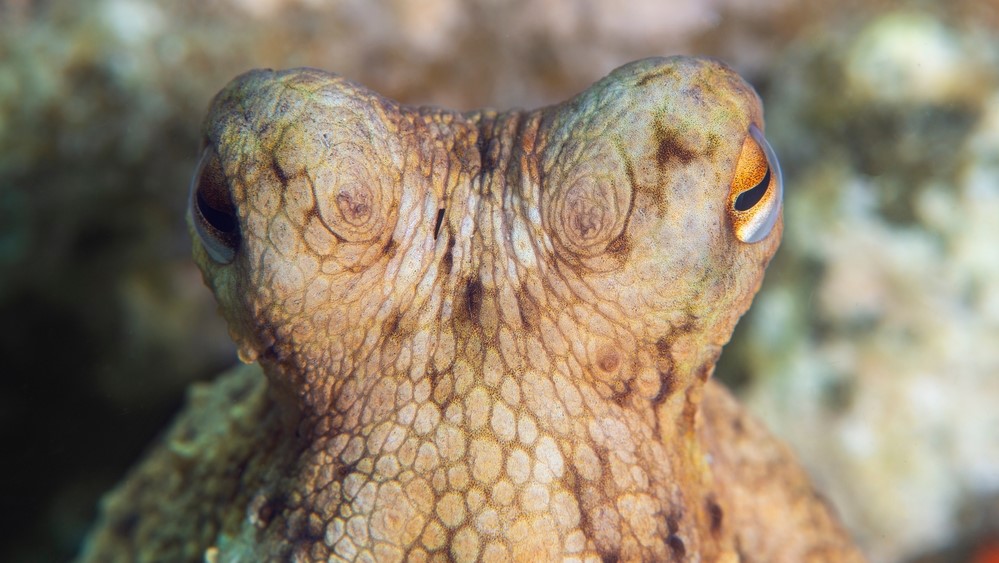
Related: What color is the universe?
Understanding more about how octopuses change color is extremely challenging because researchers are not allowed to experiment on cephalopods while they are alive due to their intelligence, Deravi said. (Octopuses are considered intelligent because they can solve complex problems, use tools and feel pain.) In the U.K., it has been proposed that octopuses and squid should be listed as sentient beings.
Why do octopuses need to camouflage?
Although the mechanics of octopus camouflage are still being uncovered, scientists have a much better understanding of why these awesome animals change color.
"Octopuses have no external protection," Jennifer Mather, a psychologist at the University of Lethbridge in Canada who specializes in cephalopod behavior, told Live Science. To a predator, an octopus is an "unprotected package of protein," which means that "basically everybody in the ocean is out to get them," she said.
"Evolutionarily speaking, the octopus had no choice," Mather said. "Without physical protection, it had to evolve ways to not be seen."
Some octopuses have developed other ways of hiding. For example, elusive glass octopuses have lost all their chromatophores and become almost completely transparent. However, for the species that rely on color-changing, adapting their hue is an inherent ability that is available to them from the moment they are born (as you can see in the video clip below of a hatching octopus at the Virginia Aquarium & Marine Science Center).
ICYMI: Your daily squee has arrived. #octobabies pic.twitter.com/D9e5T5bkunFebruary 7, 2018
There are other uses for camouflage too, such as hunting. "We tend to think of it as a defensive ability and I think it is more important as a defense," Mather said. "But that doesn't mean it's not useful to sneak up on something."
In addition to remaining unnoticed by their prey, octopuses can also use startling displays, where they break camouflage and stun their prey with drastic, rapid-fire color transitions before quickly trapping them, Mather said.
Squid and cuttlefish use color displays on their skin to communicate between individuals. A few octopus species also do this — they can produce solid colored bands to attract mates or warn off rivals during reproduction — but this is much more basic than the communication displays in other cephalopods, Mather said. However, octopuses tend to be very antisocial animals and infrequently interact with other octopuses, so they have less need to communicate, she added.
That said, octopuses sometimes use their colors to communicate with other animals. For example, blue-ringed octopuses — four species of tiny yet extremely poisonous octopus — produce bright luminescent rings to warn animals to stay away from them to avoid being poisoned, according to a 2019 study published in the journal Molluscan Research.
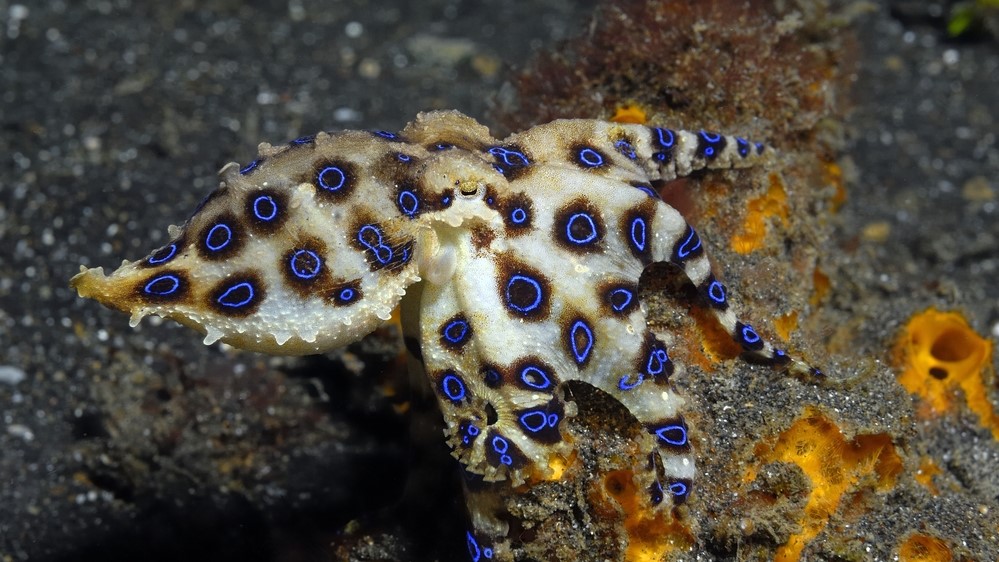
In 2019, scientists captured video footage of an octopus named Heidi changing colors in her sleep, which sparked speculation that octopuses may also change color when they dream. Researchers have identified human-like sleep cycles in octopuses, but not all researchers are convinced that the color changes can definitely be labeled as dreaming. "It's bad enough trying to figure out how people dream," Mather said. "It's absolutely impossible to figure out how octopuses dream."
Although camouflage is an innate ability for most octopuses, researchers suspect that it is something they get much better at throughout their lifespan, which is normally around one to two years. "I think they get better when they get older," Mather said. "They're pretty good when they're young, but I think they get better at the nuances of it when they get older." They also learn to combine color-changing with other behaviors, such as hiding in crevices or changing body shape, over time, she added.
Originally published on Live Science.

Harry is a U.K.-based senior staff writer at Live Science. He studied marine biology at the University of Exeter before training to become a journalist. He covers a wide range of topics including space exploration, planetary science, space weather, climate change, animal behavior and paleontology. His recent work on the solar maximum won "best space submission" at the 2024 Aerospace Media Awards and was shortlisted in the "top scoop" category at the NCTJ Awards for Excellence in 2023. He also writes Live Science's weekly Earth from space series.









